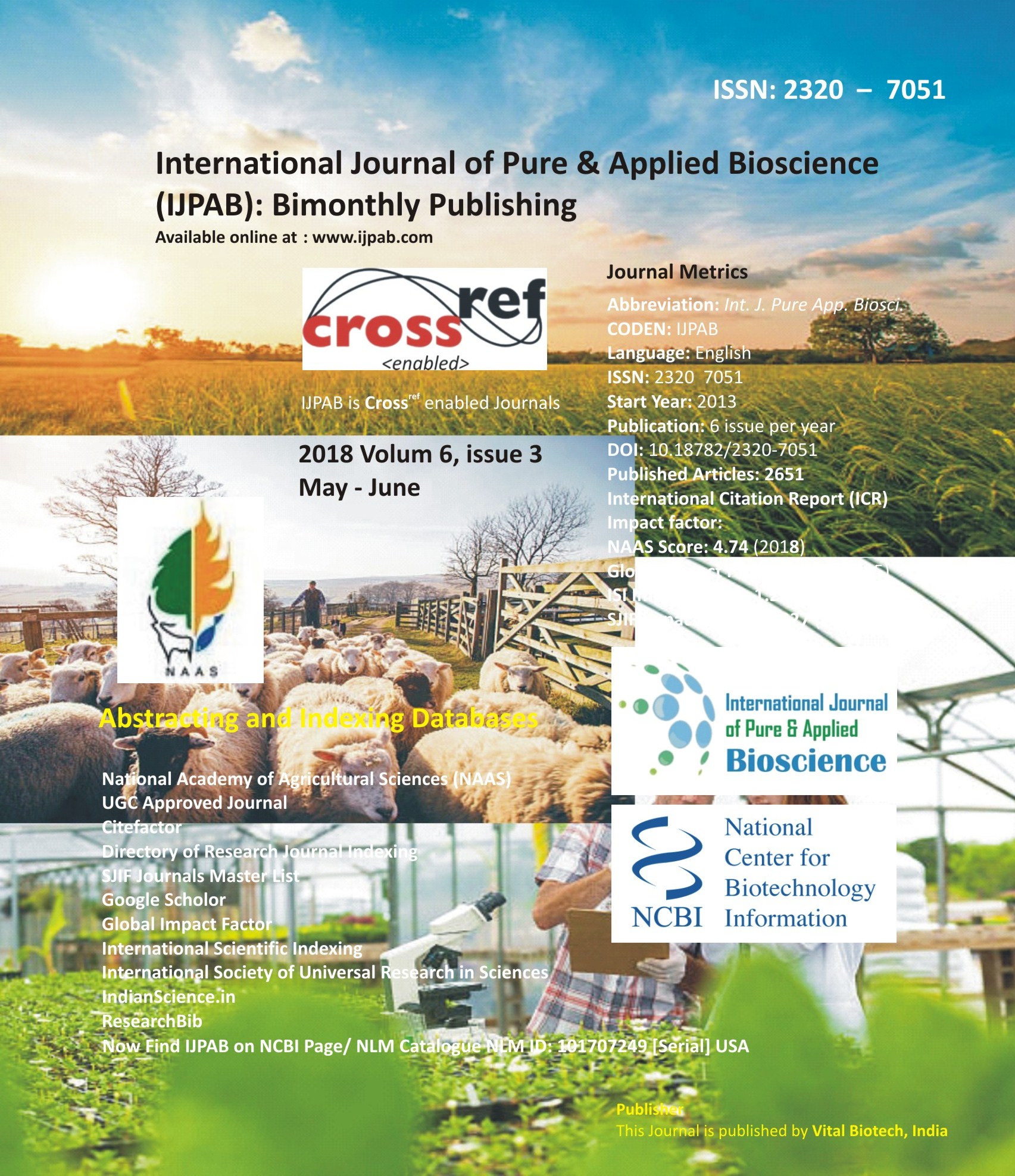
-
No. 772, Basant Vihar, Kota
Rajasthan-324009 India
-
Call Us On
+91 9784677044
-
Mail Us @
editor@ijpab.com
International Journal of Pure & Applied Bioscience (IJPAB)
Year : 2018, Volume : 6, Issue : 3
First page : (332) Last page : (339)
Article doi: : http://dx.doi.org/10.18782/2320-7051.6409
Impact of Micro Irrigation Methods on Mulberry (Morus alba L.) Leaf Quality and Production
P. Sudhakar1*, S. K. Hanumantharayappa2, M. R. Swamy Gowda3,
Jalaja S. Kumar4 and V. Sivaprasad5
1234Regional Sericultural Research Station, Central Silk Board (CSB), Bangalore-560035, Karnataka
5Central Sericultural Research and Training Institute (CSRTI), CSB, Mysore-570008, Karnataka
*Corresponding Author E-mail: sudhakarcsb@rediffmail.com
Received: 13.04.2018 | Revised: 22.05.2018 | Accepted: 29.05.2018
ABSTRACT
A field experiment was carried out at Regional Sericultural Research Station, a CSRTI Unit, Central Silk Board, Kodathi, Bangalore during 206-17 to evaluate the impact of various micro irrigation technologies and their superiority over traditional flood irrigation was attempted in an established 6 years old tree mulberry planted in wider spacing (8’x5’). A total of 5 mulberry crops were harvested imparting traditional Flood Irrigation (T1) comparing with Surface (T2) and Sub-surface irrigation technologies laying the inline drip laterals at Half feet (T3), One feet (T4) and 1½ feet depths (T5). Pooled data of 5 crops revealed that sub-surface drip irrigation laid at 1½ feet depth (T5) yielded increased a leaf yield of 10,057.08kg/ha/crop followed by T4 (sub-surface at 1 ft. depth) with 9865.88kg, T3 (sub-surface at ½ ft. depth) with 9638.06kg/ha/yr compared to the flood irrigation (T1-traditional method) with 9565.05kg/ha/yr. However, the yield level was not significantly differed compared to the recommended dose of NPK @350:140:140kg and 20MT FYM/ha/yr (10,666kg/ha/crop). However, T2 with surface irrigation yielded lower leaf yield (9467.17kg/ha/crop) compared to all the other treatments. Similar trend was noticed in case of other plant growth, yield and leaf quality analysis. An improved trend of soil physical characters was also witnessed. From the results it is evident that sub-surface drip irrigation methods have shown an edge over the flood and surface irrigation by not only improving the mulberry growth and yield but also economizing irrigation water, frequency of irrigation, improving soil WHC, Bulk density and infiltration of water to the deeper layers of root zones making availability and appropriate utilization of irrigation water.
Key words: Mulberry, Leaf yield, Rhizosphere, Bulk density, Drip-irrigation.
Full Text : PDF; Journal doi : http://dx.doi.org/10.18782
Cite this article: Sudhakar, P.S., Hanumantharayappa, K. Swamy Gowda, M.R., Kumar, J.S. and Sivaprasad, V., Impact of Micro Irrigation Methods on Mulberry (Morus alba L.) Leaf Quality and Production, Int. J. Pure App. Biosci.6(3): 332-339 (2018). doi: http://dx.doi.org/10.18782/2320-7051.6409

